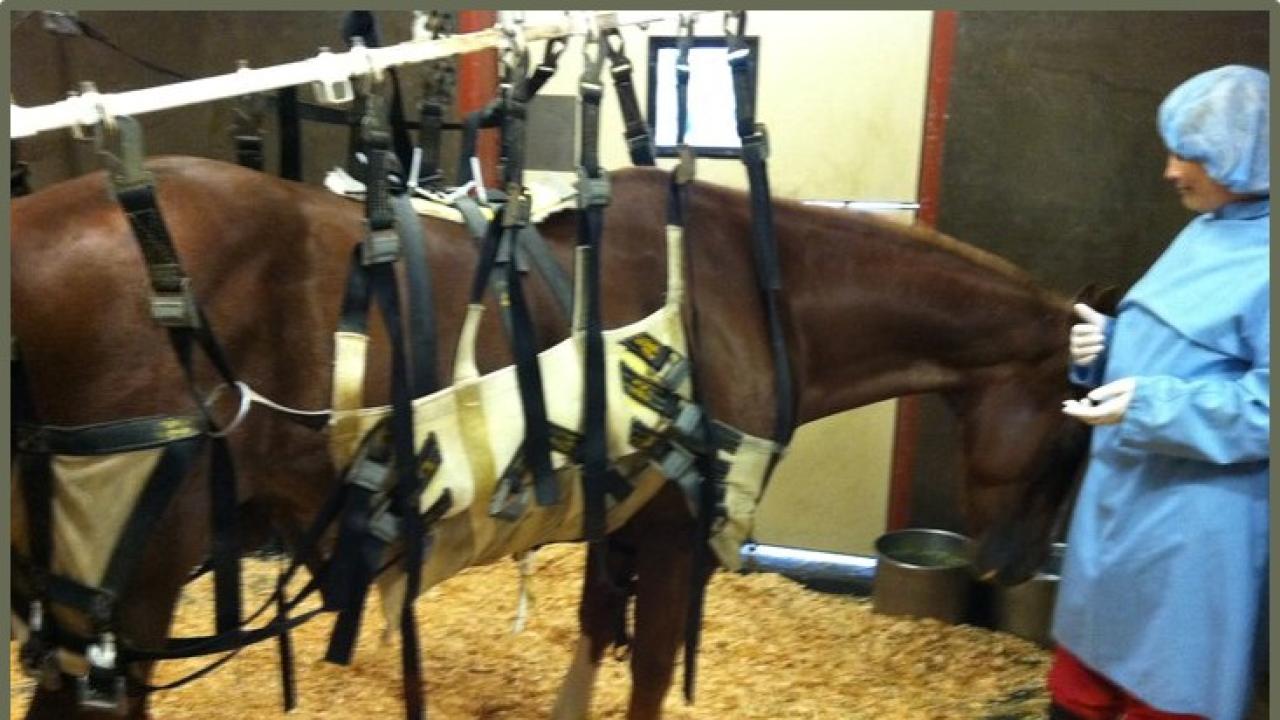
UC Davis Vet School Diagnostic Lab Performs Critical Disease Testing for Equine Herpesvirus
Equine herpesvirus-1 (EHV-1) is relatively widespread in horses; approximately 60 percent of healthy horses harbor the virus. Latent infection can be reactivated during periods of stress, causing clinical disease and viral shedding.
While the more common form of EHV-1 can cause respiratory illness as well as abortion, it is rarely fatal. However, a neurological strain of this virus, also known as equine herpes myeloencephalopathy (EHM), can kill 30 to 50 percent of affected horses.
“That’s why it’s critical that we are able to differentiate between strains,” said Dr. Beate Crossley, a virologist with the California Animal Health & Food Safety Laboratory (CAHFS). “Our laboratory is able to use PCR testing for this disease and quickly confirm suspected cases.”
EHV-1/EHM acts like any other virus in that it can be passed quickly from one individual to another in crowded environments, such as horse shows and facilities. In one of the largest incidents to date, an EHV-1/EHM outbreak at the 2011 Western National Cutting Horse Event in Ogden, Utah potentially exposed the virus to at least 2,106 horses at 242 equine facilities in 19 states (including California) and one Canadian province, and forced the cancelation of horse shows from coast to coast.
By the time the outbreak eased, 90 horses were infected with EHV-1 (57) or EHM (33), with another 72 suspected cases (EHV-1: 62, EHM: 10). Thirteen of the 33 EHM-infected horses died.
That event prompted the California Department of Food and Agriculture (CDFA) to classify EHM as a regulatory rather than a monitored condition. This gave CDFA and other state entities a more prominent role in preventing the spread of the virus through their ability to impose quarantine and movement restrictions.
The CDFA continually monitors for EHM cases. When a horse is suspected, samples are sent to CAHFS—the state’s reference lab—for confirmation. In the case of a horse’s death, CAHFS performs necropsies to confirm the presence of EHV-1.
“CAHFS is here to help keep California’s horses healthy and safe,” Crossley said. “Suspect EHV-1 cases are prioritized for testing and the PCR assay will provide accurate results within a few hours of receiving the sample. The fast turn-around-time and the accuracy of the test, including the ability of detecting very small amounts of virus, allows CDFA to initiate quarantine early for a confirmed case of EHM and to alert other horse owners to increase their biosecurity to protect their horse from contracting this often-deadly disease.”
